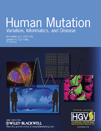Comparison of Programs for in silico Assessment of Missense Substitutions
Over the last decade, a considerable number of computer programs have been developed to predict the effects of missense substitutions on protein function (for a review, see Tavtigian et al., Hum Mutat 29:1327–1336, 2008). Combined with appropriate analyses of observational data, these programs have become an important tool for assessing unclassified missense substitutions observed during clinical testing of disease susceptibility genes (Miller et al., Hum Mutat 32, 2011; DOI: 10.1002/humu.21504); Jordan et al., AJHG 88:183-192, 2011). Their relative importance will grow as massively parallel sequencing reduces the cost and consequently increases the scale of both clinical and research mutation screening. Consequently, there is a great need for unbiased comparisons of program performance.
In this issue, Hicks et al. (Hum Mutat 32:661–668, 2011) make a comparison of four missense substitution analysis programs under conditions that largely overcome limitations of previous studies in this area. In particular, (i) lists of classified missense substitutions used as a basis of their analysis are taken from locus specific databases and have been subjected to expert opinion classification; and (ii) programs were used with their native protein multiple sequence alignments and, wherever possible, were also used with the other programs' native alignments.
Results from this study may help investigators choose which programs to use — and which to avoid — under specific study circumstances. The programs' distinct error patterns suggest that they are not “all the same under the hood”; consequently, it may be possible to create better programs by combining the stronger points from several programs' underlying algorithms. Results also point to a need for quality control standards in the preparation, characterization, and use of sequence alignments in the process of missense substitution analysis.




